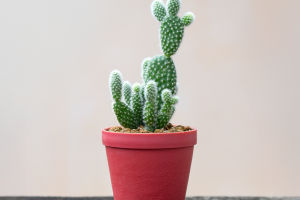Sunflowers are famous for their love of the sun, and rightly so. If you've ever watched one follow the sun from dawn to dusk, you know how much they thrive in full sunlight.
To grow healthy, vibrant sunflowers, you must pick the right spot in your garden or home.
Pick a Sunny Spot
Sunflowers require at least 6–8 hours of direct sunlight each day. That means the best places to plant them are locations that get full sun throughout the day, like a south-facing garden bed or balcony.
Actionable Tip: If you're planting sunflowers in a garden, avoid shaded areas, like spots near tall trees or buildings. These areas will stunt their growth.
Space for Growth
Sunflowers grow tall, and their roots spread wide. Make sure to plant them in an area where they have plenty of room to grow. Space your sunflower seeds about 6–12 inches apart to allow for proper air circulation and prevent overcrowding.
Example Tip: If you're planting multiple sunflowers, leave enough room between them to accommodate their large stems and heavy flower heads.
Choosing the Right Soil for Sunflowers
The right soil is crucial for healthy sunflowers. While they're not too picky about soil type, they do best in well-draining, fertile soil with a slightly acidic to neutral pH.
1. Soil Texture
Sunflowers need soil that's loose enough for their long roots to grow deep into the ground. Sandy loam or loamy soil works best, as it allows water to drain properly without becoming too compact. Avoid heavy clay soil, which can lead to root rot.
Actionable Tip: If your soil is too heavy, you can amend it by mixing in compost or organic matter to improve drainage and fertility.
2. Soil pH
For optimal growth, sunflowers prefer soil with a pH between 6.0 and 7.5. This slightly acidic to neutral range helps the plants absorb the nutrients they need to grow big and strong.
Example Tip: If you're unsure about your soil's pH, you can buy a simple testing kit at your local garden center to check it.
Watering Sunflowers the Right Way
Watering sunflowers may seem straightforward, but it's essential to get it right. Sunflowers love a lot of water, but they don't like to sit in soggy soil.
1. Water Deeply, Not Frequently
Sunflowers have long taproots that go deep into the soil, so they need deep watering to encourage root growth. Rather than watering lightly every day, give your sunflowers a good, deep watering once or twice a week. This allows the water to reach their roots and helps them grow stronger.
Actionable Tip: Water deeply early in the morning, as this prevents the foliage from staying wet overnight, which can lead to diseases.
2. Avoid Overwatering
While sunflowers need consistent moisture, overwatering can lead to root rot and other issues. Always let the top of the soil dry out between waterings, and make sure the soil has proper drainage.
Example Tip: If the weather is particularly rainy, you may need to cut back on watering to avoid waterlogging.
Supporting Sunflowers as They Grow
As sunflowers grow tall, they may need support, especially if you're growing larger varieties.
1. Use Stakes or Cages
Once your sunflowers start to grow, you may notice that their stems get tall and can become top-heavy, especially when they start flowering. You can help prevent them from falling over by using stakes or plant cages.
Actionable Tip: Use a bamboo stake or garden twine to tie the sunflower stems loosely to prevent wind damage.
2. Mulching to Keep Moisture
Mulch around the base of your sunflowers to help retain moisture in the soil and keep weeds at bay. This is especially helpful during hot summer months when sunflowers need a steady supply of water.
Example Tip: Use straw or shredded leaves as mulch to protect the roots and maintain moisture.
Harvesting Sunflowers
Sunflowers can be harvested in late summer or early fall, once the petals start to dry up and the seeds are fully developed.
1. When to Harvest
The best time to harvest sunflowers is when the back of the flower head turns yellow, and the seeds look firm and black. At this point, the sunflower head will be heavy with seeds, and you can easily snap the stem to cut the flower.
Actionable Tip: Leave some of the flowers for the birds to enjoy, as they love sunflower seeds!
Conclusion: Sunflowers Made Simple
Growing sunflowers doesn't require a green thumb—just the right light, soil, and water. By following these easy steps, you can enjoy vibrant, healthy sunflowers that brighten your space. Whether you're growing them for their beauty or for harvesting seeds, sunflowers are a fantastic and rewarding plant to grow in any garden. With a little care, you'll soon be basking in their golden glow.


